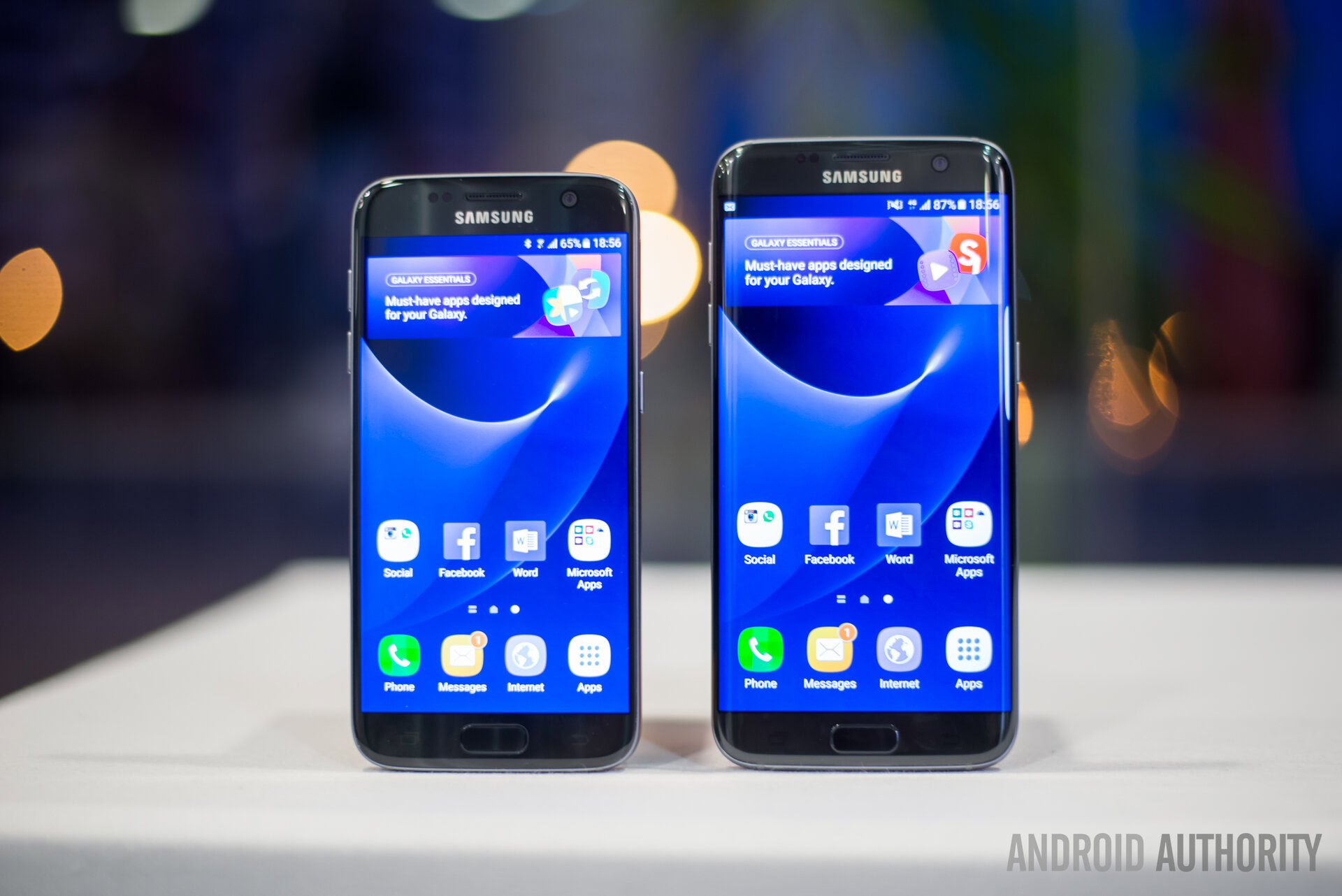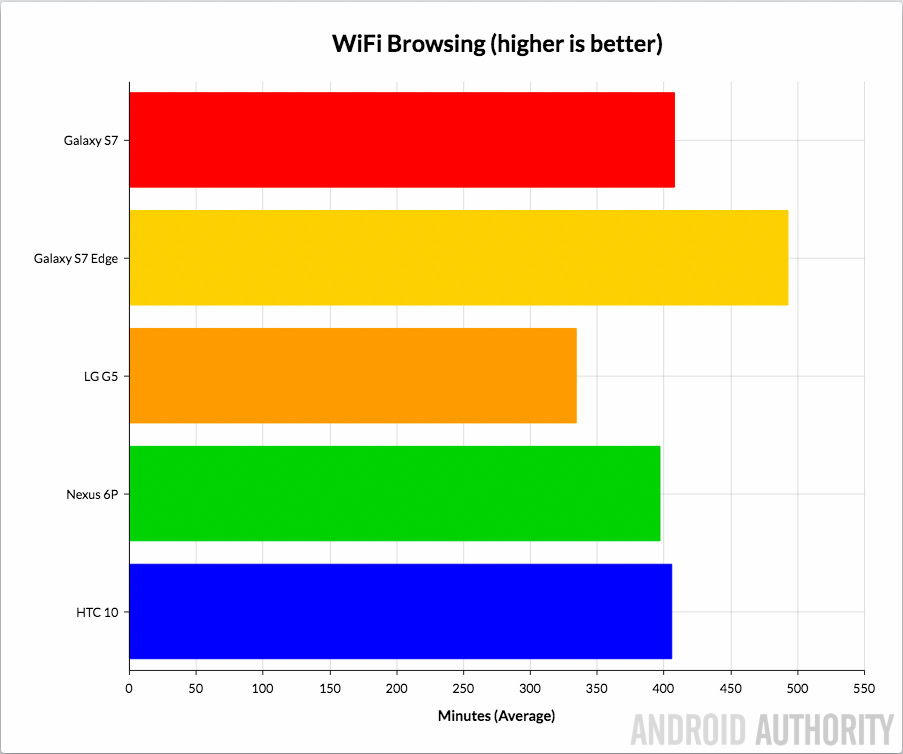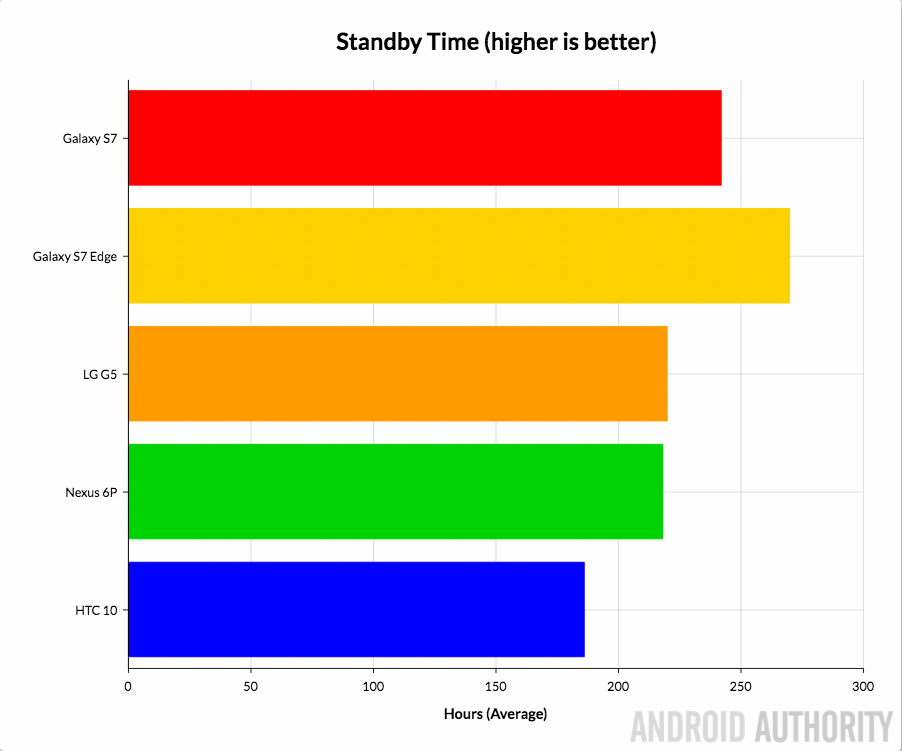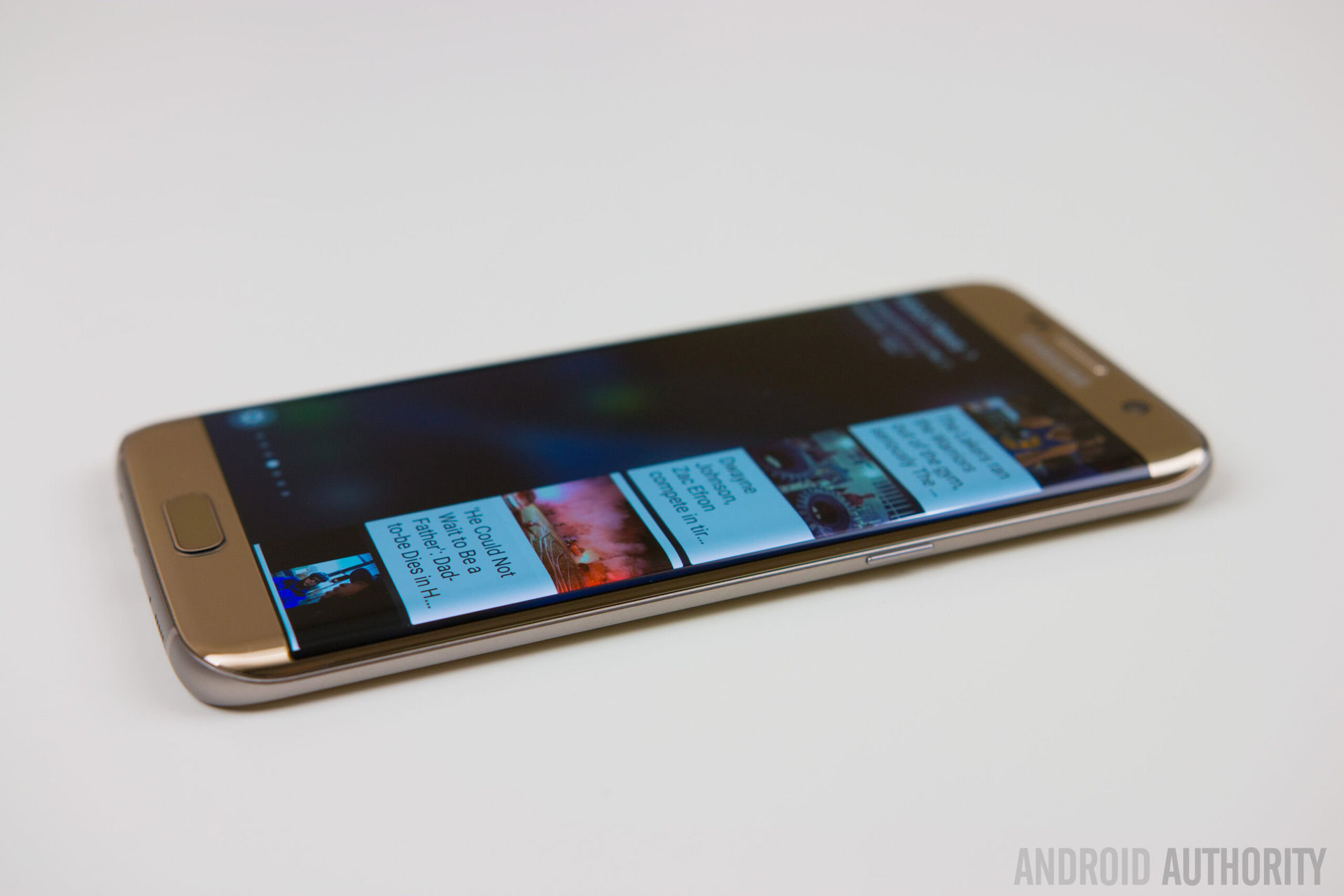Affiliate links on Android Authority may earn us a commission. Learn more.
Galaxy S7 v S7 Edge battery life showdown
Published onApril 28, 2016

Arguably the biggest criticism of last year’s Galaxy S6 and Galaxy S6 Edge was the measly battery size, which – coupled with the fact that it was the first Galaxy S handset where the battery was non-removable – meant you needed to have a power source near almost all the time.
[aa_content_ad aa_single_ad_type=”single_750_more” aa_single_ad_pos=”center” ][/aa_content_ad]
[aa_content_ad aa_single_ad_type=”single_mobile” aa_single_ad_pos=”center” ][/aa_content_ad]
Fast forward a year and Samsung showed it listens to users by introducing considerably larger batteries in the Galaxy S7 and Galaxy S7 Edge, with the 3000mAh and 3600mAh non-removable units an increase of 18% and 40% over their predecessors respectively.
We’ve already covered the battery life offered by the two versions of the Galaxy S7, but how do Samsung’s two latest flagships stack up to each other, and to the competition? Let’s find out in this battery showdown between the Exynos versions of the Galaxy S7 and Galaxy S7 Edge.
WiFi browsing test
To kick off our testing, we charged each smartphone to full, removed the charger and ran our custom WiFi browsing test tool at full brightness until the battery drained to 0. We then recharged the phone, and recorded the Screen on Time recorded by the Android OS. During the testing, each handset was placed 3 meters from the WiFi router it was connected to, and syncing of accounts and data had been switched off.

In this test, the Galaxy S7 Edge clearly comes out on top, offering 8 hours and 13 minutes of Wi-Fi browsing on average, compared to 6 hours and 48 minutes for the Galaxy S7 Edge. The S7 Edge is also considerably ahead of the competition despite Samsung’s Super AMOLED display being the brightest on the market which can contribute to power usage (although AMOLED technology is more power efficient than either IPS or LCD).
Video Playback Test
From WiFi browsing to video playback and again, we tested from full to empty. Looping the same 5-minute video over and over on each of these handsets, we ran the test at 50% brightness and then recharged the phone to get the screen on time listed by the Android OS. During the test, each device was put in airplane mode to prevent any syncing or connections preventing the video from playing.

In this test, the Galaxy S7 was already the clear leader with an average Video Playback battery life of 15 hours and 11 minutes, but the Galaxy S7 Edge tops this further, scoring an average of 17 hours and 42 minutes. Consider that the Nexus 6P only scores 6 hours and 57 minutes, the Galaxy S7 Edge is certainly impressive with a battery that’s only 150mAh larger but lasts a whopping 10 hours and 45 minutes longer, at 17 hours and 42 minutes.
Standby Test
Our third and final test involves testing the longevity of each handset, as an indicator of the maximum standby life. Each smartphone was charged to full and WiFi was turned on with the same set of apps syncing data and notifications (11 apps in total). After exactly 24 hours, the remaining battery life was measured and this data used to extrapolate the total potential battery life.

As expected, the Galaxy S7 Edge scores highly again in the Standby battery test but doesn’t last quite as long as I’d have expected; lasting approximately 11 days and 6 hours, this is only slightly larger than the 10 days and 2 hours offered by the Galaxy S7 despite having a considerably larger battery. That being said, both of these lead the competition and will offer exceptional longevity on a single charge for infrequent users.
My personal experiences

Testing under these conditions isn’t always indicative of day-to-day usage, where variables such as network coverage, usage of other apps and more, can all impact the actual battery life offered by a smartphone. To this effect, does the battery life live up to its billing above?
[related_videos title=”Galaxy S7/Edge in video” align=”left” type=”custom” videos=”682253,680480,679964,679646,679576,676937″]I initially reviewed the Galaxy S7 (alongside Joshua Vergara) and in the couple of weeks I used it, I found the battery to deliver between 4 and 5 hours’ Screen on time off a single charge. At the same time, Lanh Nguyen and Andrew Grush conducted our Galaxy S7 Edge review, where they reported an average screen on time of between 7 and 10 hours, so switching over to the Galaxy S7 Edge, I certainly expected much better battery life. And a month or so later, I can safely say that the Galaxy S7 Edge certainly delivers.
There’s something to be said for making a phone thicker for the sake of a larger battery and the decision by Samsung has proved to be a wise one, with the Galaxy S7 Edge delivering between 6 and 8 hours’ screen on time on a single charge. Now, my usage is what I would consider quite heavy and I can often be found watching movies, playing games, syncing emails or using social media for large parts of the day.
[aa_content_ad aa_single_ad_type=”single_750_more” aa_single_ad_pos=”center” ][/aa_content_ad]
[aa_content_ad aa_single_ad_type=”single_mobile” aa_single_ad_pos=”center” ][/aa_content_ad]
While using the Galaxy S7, I struggled to get through a full day of heavy usage but with the Galaxy S7 Edge, I’m often left with around 20 percent at the end of a long day. With over 70 active apps installed, my phone is always in use and in a month, I’ve only had a low battery indicator three times (excluding a couple where I forgot to charge it overnight).
Whichever way you look at it, the battery life alone is one reason to keep the Galaxy S7 Edge instead of its small sibling.
Whichever way you look at it, the Galaxy S7 Edge battery life definitely doesn’t disappoint and as much as I like the Galaxy S7, the battery life alone is one reason to keep the Galaxy S7 Edge instead of its small sibling.
Wrap up
Looking at the data above, one thing is certainly clear: Samsung’s decision to increase the battery size in the Galaxy S7 and S7 Edge has been justified, thanks to the exceptional battery life of the latter. The Galaxy S7 is certainly no slouch either and while its larger sibling is streaks ahead of the competition, it holds its own against its biggest rivals.
[related_videos title=”Galaxy S7 / S7 Edge vs:” align=”right” type=”custom” videos=”687080,683535,682146,681703,680806,676419″]Another key takeaway from this set of data is the gains provided by newer software optimisations and system architectures, as the Snapdragon 820 and Exynos 8890 chipsets definitely herald battery gains over their predecessors.
We often hear the claim that handsets running stock Android or close-to-stock offer the best battery life but considering the data, this doesn’t appear to be the case. In fact, considering all the battery life reviews we’ve run so far, and it’s clear that Android running a skin can actually be good for the battery. In the case of Samsung, the per-app power management feature in TouchWiz also helps to improve the actual day-to-day battery life without impacting on the overall performance.
Whichever handset you buy, there’s no doubting that Samsung’s Galaxy S7 family delivers in the battery department and although the battery is no longer removable, the Galaxy S7 Edge should at least get most, if not all, users through a day’s usage, if not more.
What do you think of the Galaxy S7 and Galaxy S7 Edge battery life? Let us know your views in the comments below!